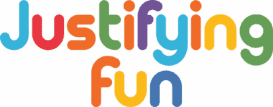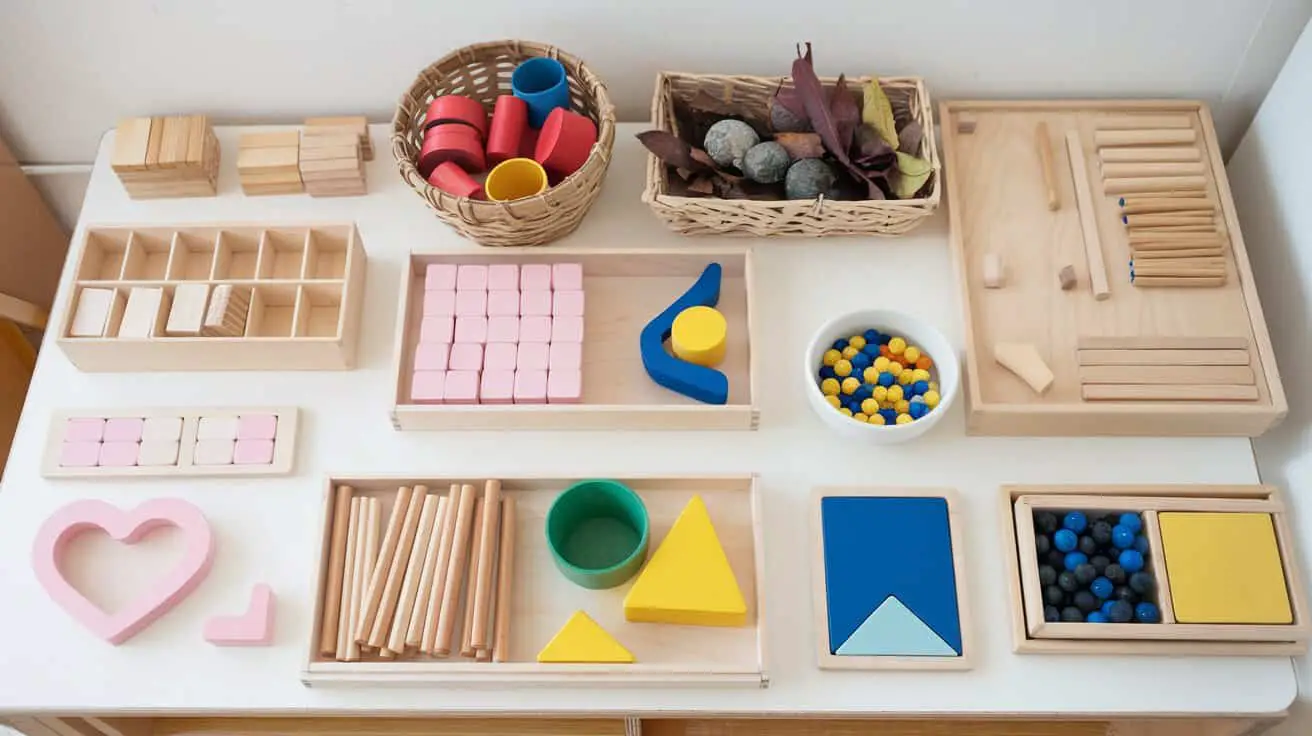
Here are 10 engaging Montessori activities that blend fun with learning, helping kids explore their creativity and curiosity!
These activities cater to various age groups and skills, making them perfect for parents and educators looking to enhance children’s learning experiences in a playful way.
Artistic Expression with Nature Collages
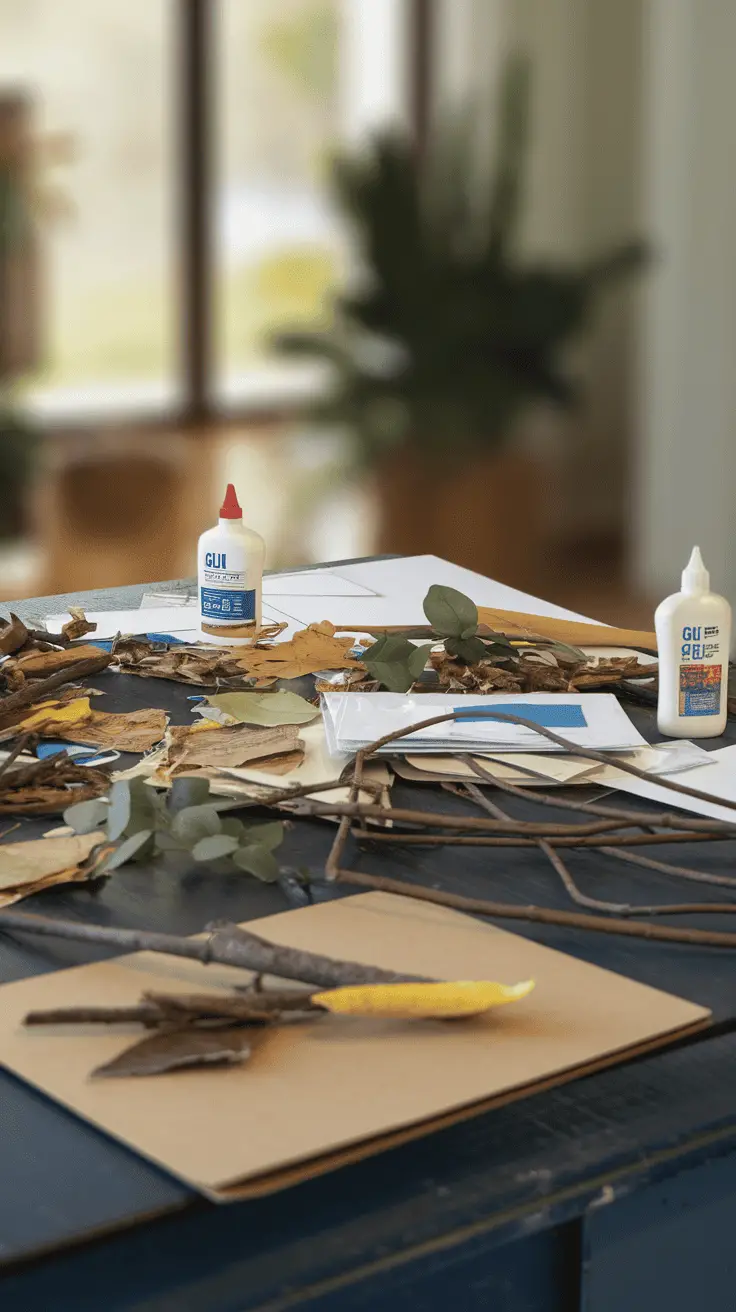
Nature collages are a fantastic way to spark creativity in kids. Gather leaves, twigs, and other natural materials to create beautiful artwork. The image shows a workspace filled with colorful leaves and glue, ready for some artistic fun.
Using simple supplies like paper and glue, children can experiment with shapes and colors. They can learn to arrange items in different patterns, encouraging fine motor skills and creativity. This activity blends art with nature, making it a great choice for fall learning activities.
Kids will enjoy the process of collecting materials and thinking about how to use them. It’s a perfect activity for Montessori kids. They can express themselves freely while connecting with the world around them. Plus, it’s a wonderful way to practice number learning with themes like counting leaves or grouping materials.
Building with Wooden Blocks
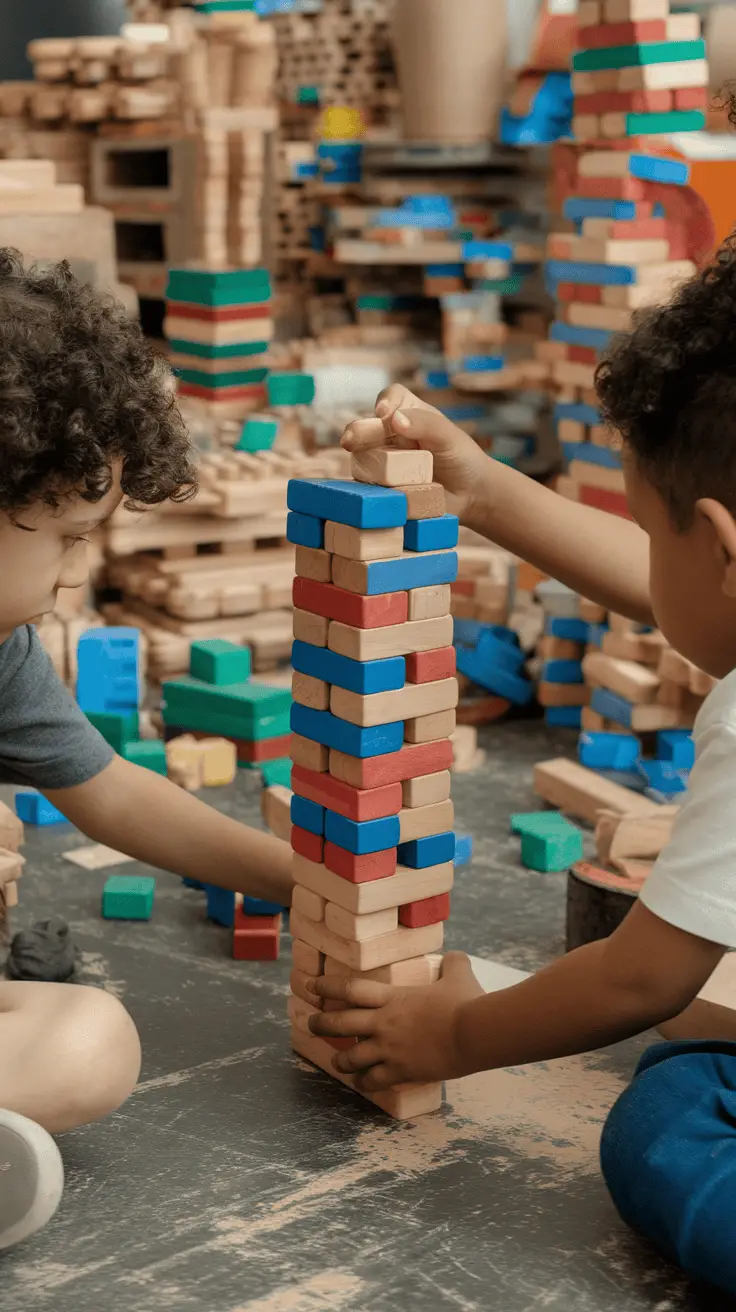
Building with wooden blocks is a fantastic way for kids to learn and grow. In the picture, two children are stacking colorful blocks, showing teamwork and creativity. This simple activity supports important skills like problem-solving and spatial awareness.
As they work together, they explore the concepts of balance and structure. Kids can learn numbers 1-10 by counting blocks as they build. This makes it a perfect activity for preschool ideas for kindergarteners. They can sort blocks by color or size, turning the fun into number learning activities.
Using blocks encourages imagination. Children can create towers, castles, or any design they dream up. This unstructured playtime is vital for their development. It helps them understand concepts in a hands-on way, making learning more enjoyable.
Fall learning activities for kids can also incorporate blocks. They could build a pumpkin patch or a scene from autumn. This not only teaches numbers but also invites storytelling into the mix.
Practical Life Skills with Water Pouring
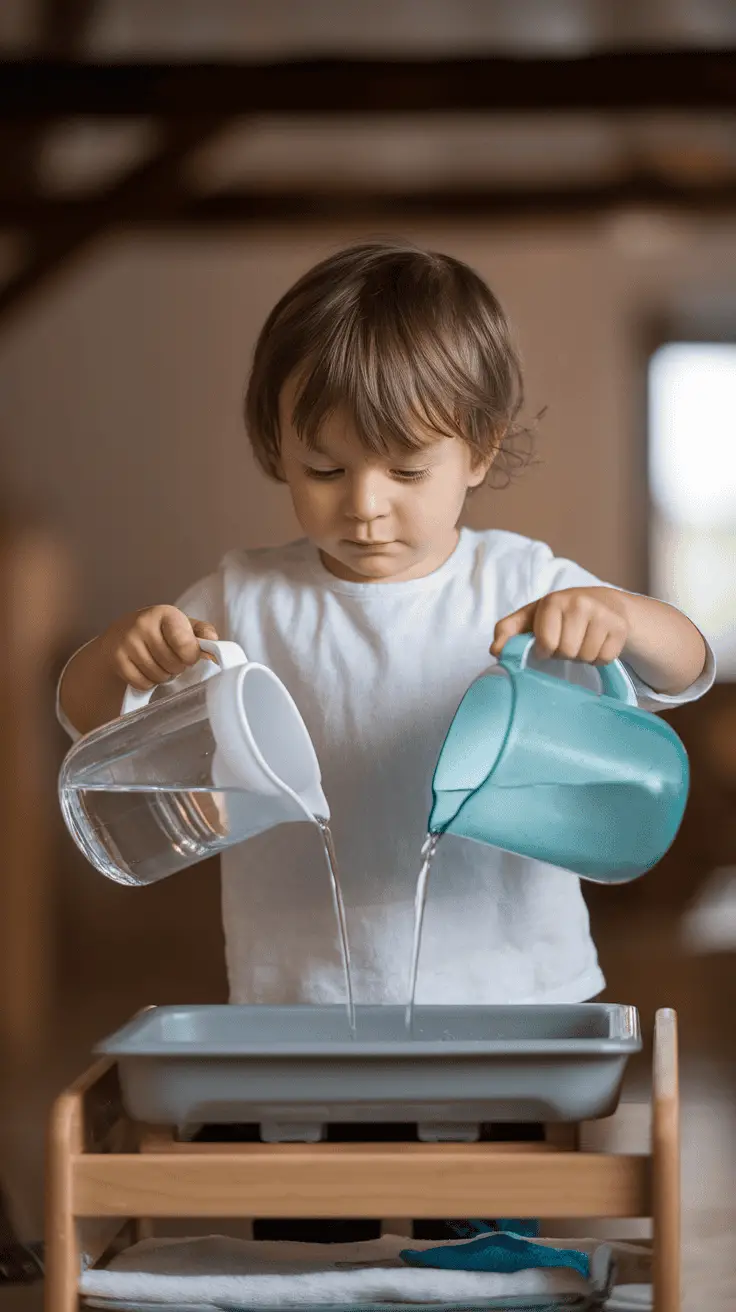
Water pouring activities are a fantastic way to teach practical life skills to young children. In the image, we see a child focused on pouring water from two different pitchers into a tray. This simple activity encourages concentration and fine motor skills.
Using water to pour helps little ones understand concepts like volume and balance. Children can learn about how much water each pitcher holds, providing a hands-on experience with numbers. This ties nicely into number learning activities for preschoolers, specifically activities for numbers 1-10.
As they pour, children are also developing their hand-eye coordination. This skill is crucial for future tasks, making water pouring a perfect practical life skill. Plus, it’s a fun way to explore sensory play, keeping kids engaged while they learn!
Simple Gardening Activities
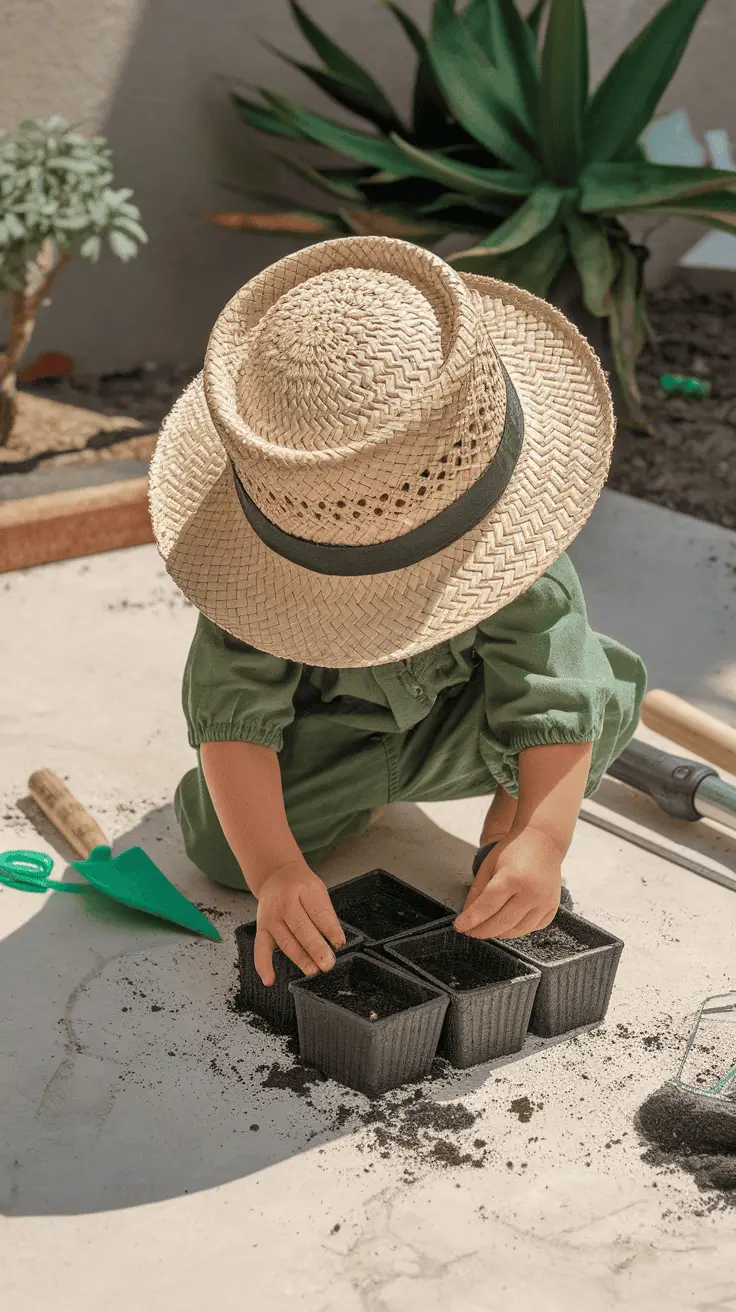
Gardening is a fantastic way for kids to connect with nature and learn valuable skills. The image shows a little one engaged in planting seeds, which is a perfect example of a simple gardening activity. With a straw hat and a mini shovel, this child is enjoying hands-on learning.
Setting up a small garden can spark curiosity in children. They can start with easy-to-grow plants like herbs or flowers. This not only teaches them about plant life cycles but also introduces basic concepts in biology. It’s a fun way to incorporate fall learning activities for kids.
Another idea is to create a sensory garden. This can include plants with different textures and scents. Kids can use their senses to explore and learn about how plants interact with their environment. These activities can be combined with number learning activities, like counting seeds or measuring plant growth.
For preschool ideas, consider creating a garden journal. Kids can draw pictures of their plants and write simple observations. This also provides a chance to practice numbers and letters, making it a great activity for kindergarteners.
Nature Scavenger Hunt Adventure

A nature scavenger hunt is a fantastic way to get kids involved in the outdoors. In the image, you can see a group of children excitedly exploring their surroundings. They are holding various plants and leaves, showcasing their findings from the hunt. This activity encourages observation and discovery, making it a fun learning experience.
Kids can practice counting and identifying different items they find. Helping them learn numbers 1-10 can be integrated into this activity. For example, you can ask them to find five different types of leaves and count them together. This aligns perfectly with learning activities designed for preschoolers and kindergarteners.
Nature scavenger hunts are more than just fun; they promote physical activity and foster an appreciation for nature. You can create a simple list of things to find—like a smooth rock or a colorful flower. This not only keeps the kids engaged but also helps them connect with their environment.
Sensory Bins for Exploration
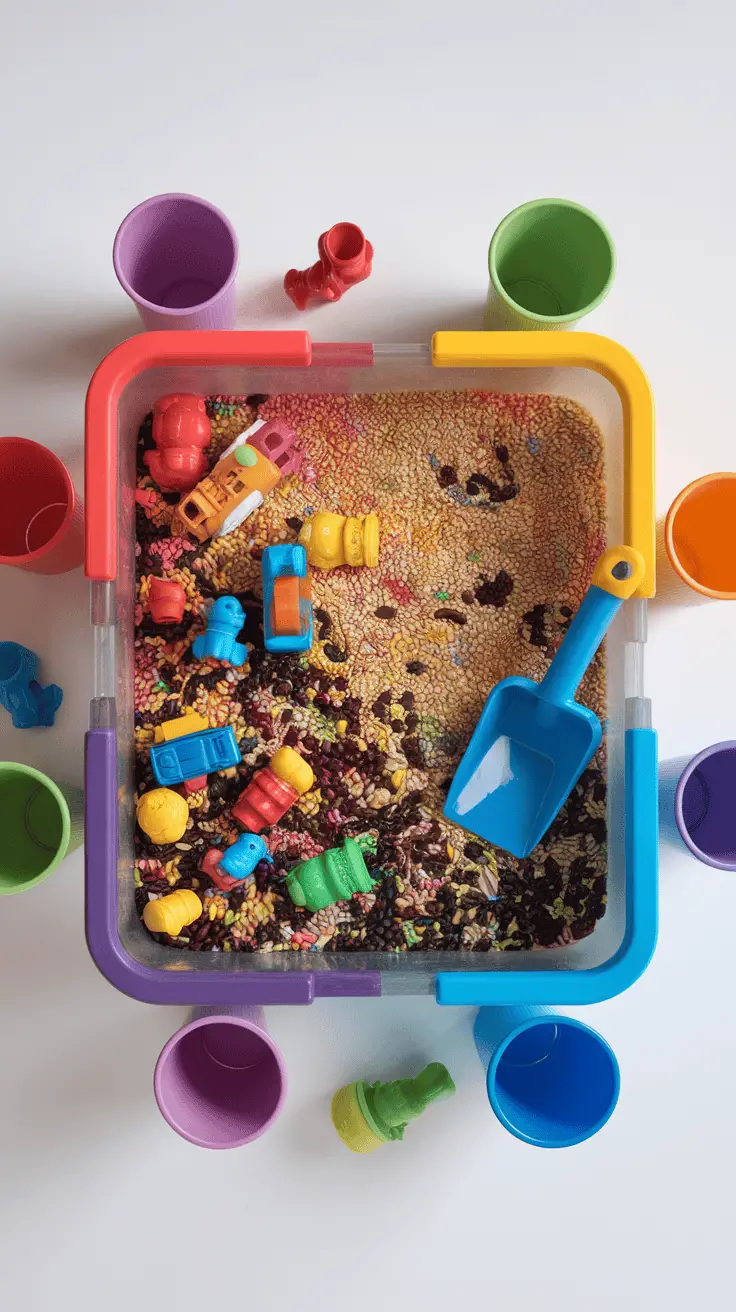
Sensory bins are a fantastic way for kids to learn through play. This image shows a colorful bin filled with various grains and tiny toy vehicles. The vibrant colors and textures invite little hands to dig in and explore.
Using sensory bins helps with fine motor skills. Kids can scoop, pour, and sort different items. This is great for number learning activities too! For example, you can incorporate counting by having them collect certain toys or scoop a specific number of grains.
Activities like this are perfect for preschool ideas and fall learning activities for kids. You can add elements like leaves or pumpkins to match the season. Overall, sensory bins promote creativity and curiosity in fun and engaging ways.
Cooking with Kids: Simple Recipes
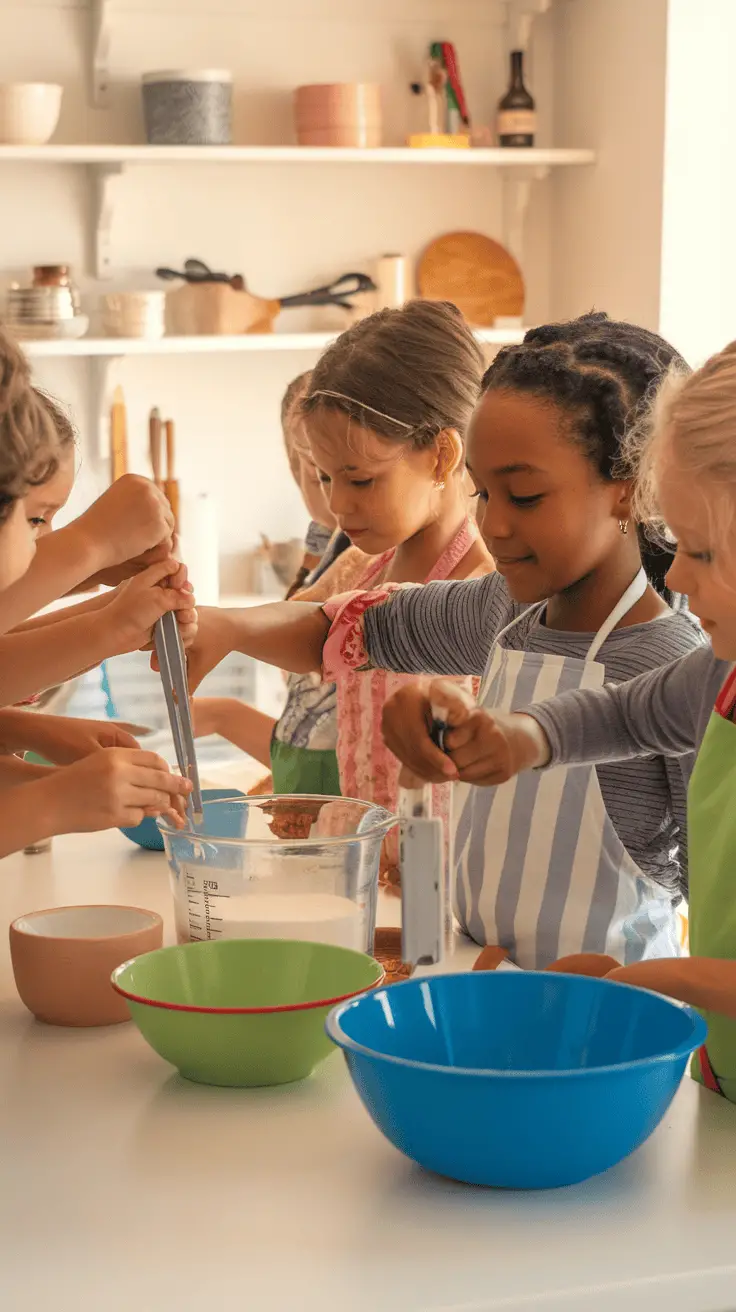
Cooking with kids can be a fun and educational experience. The image shows several children working together in a bright, cheerful kitchen, each focused on their tasks. They are measuring ingredients, mixing, and preparing to create something delicious. This hands-on activity is perfect for learning and bonding.
Simple recipes are great for young chefs. Think about making something like banana pancakes. You just need ripe bananas, eggs, and a bit of flour. Kids can mash the bananas, mix the ingredients, and watch as their creations come to life on the stove.
Another fun idea is making homemade pizza. Get some pre-made dough and let the kids add their favorite toppings. This not only teaches them about cooking but also allows them to express their creativity. You can use this time to incorporate numbers. For example, count the pepperoni slices, or discuss how many minutes the pizza needs to bake.
Cooking together can be a wonderful way for children to practice important skills. They learn to follow instructions, work as a team, and even get some math practice. Mixing ingredients and measuring can be fun number learning activities, making this a perfect blend of learning and play!
Music and Movement Activities
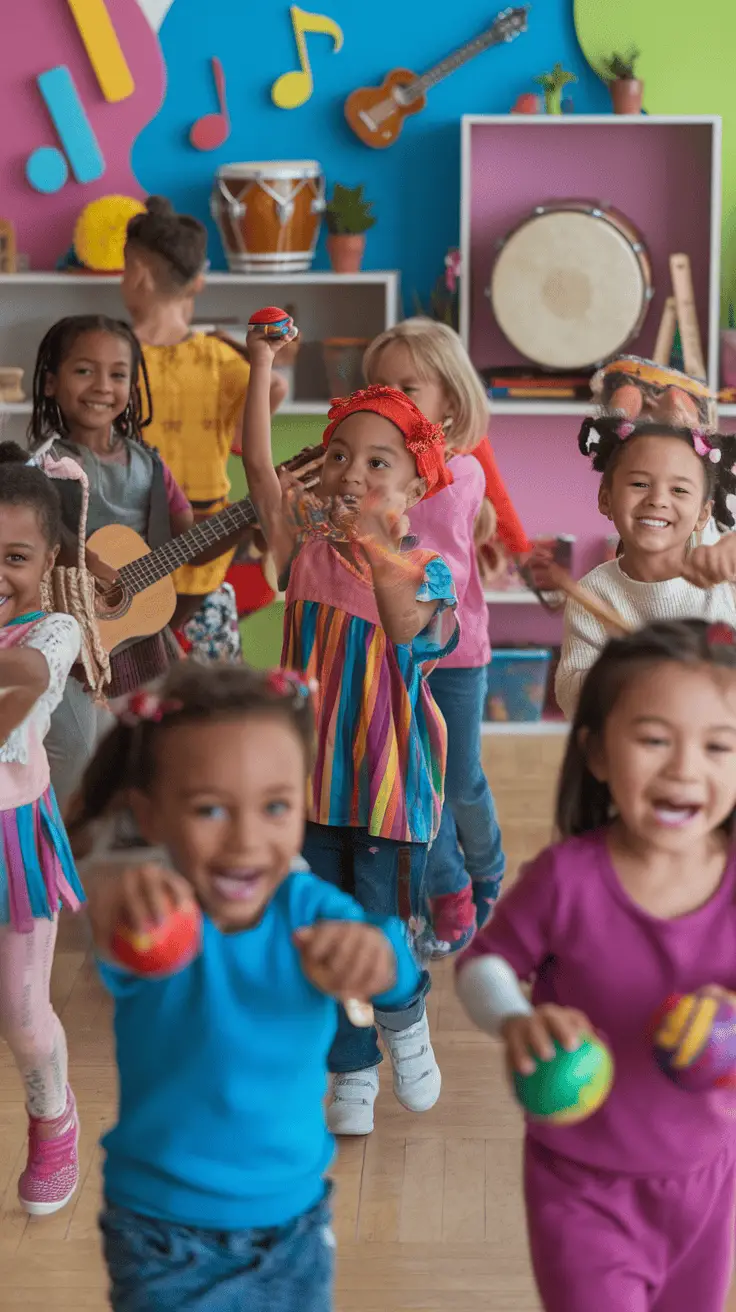
In this lively image, a group of joyful children are engaged in a music and movement activity. Each child holds musical instruments, some are shaking maracas, while others strum a guitar. Their bright and colorful outfits add to the cheerful atmosphere, highlighting the fun of learning through music.
These activities are perfect for preschool ideas for kindergarten and can enhance number learning activities for toddlers. By incorporating rhythm and movement, children develop coordination and gain confidence. Simple songs can include number counting, making it a fun way to learn numbers 1-10 while dancing and playing.
Integrating music into learning not only sparks joy but also helps with memory retention. Think of it as a playful way to teach concepts! Activities like these can be very beneficial for fall learning activities for kids, allowing them to celebrate the season through music and creative expression.
Mathematical Concepts through Patterning
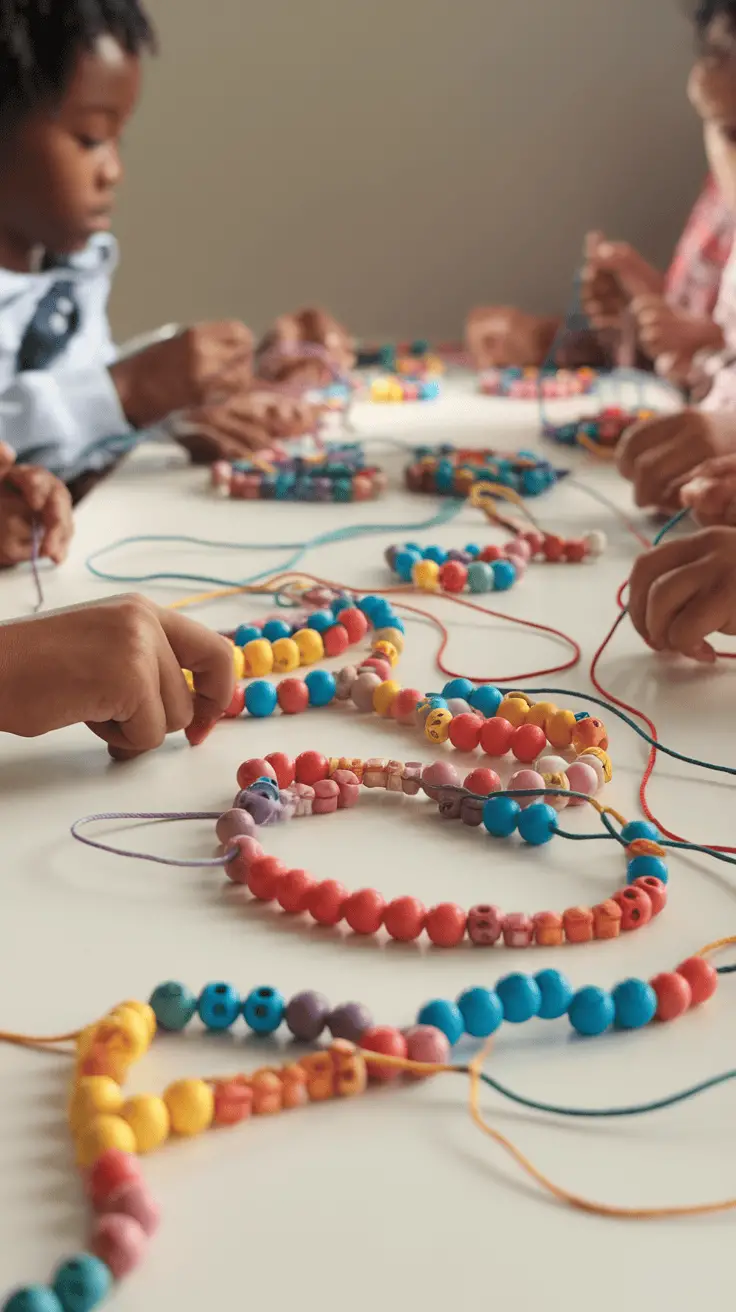
This image showcases a vibrant scene of children engaged in a fun beading activity. They are threading colorful beads onto strings, creating beautiful patterns. This hands-on experience is a perfect way to introduce mathematical concepts to young learners.
Patterning is a fantastic way to help kids understand sequences and relationships between numbers. As children create patterns with the beads, they practice counting and recognizing numbers, which are essential skills for math learning. Activities like these are excellent for number learning activities for preschoolers.
Not only does this activity encourage creativity, but it also supports fine motor skills. Kids can learn numbers 1-10 as they count each bead they place on their string. This is one of the many fun activities for Montessori kids, promoting both learning and play.
Incorporating counting and patterning into playtime makes math enjoyable. Fall learning activities for kids can include similar hands-on crafts, allowing children to explore numbers while they create. Engaging in this kind of activity nurtures a love for learning in young minds.
Language Development through Storytelling
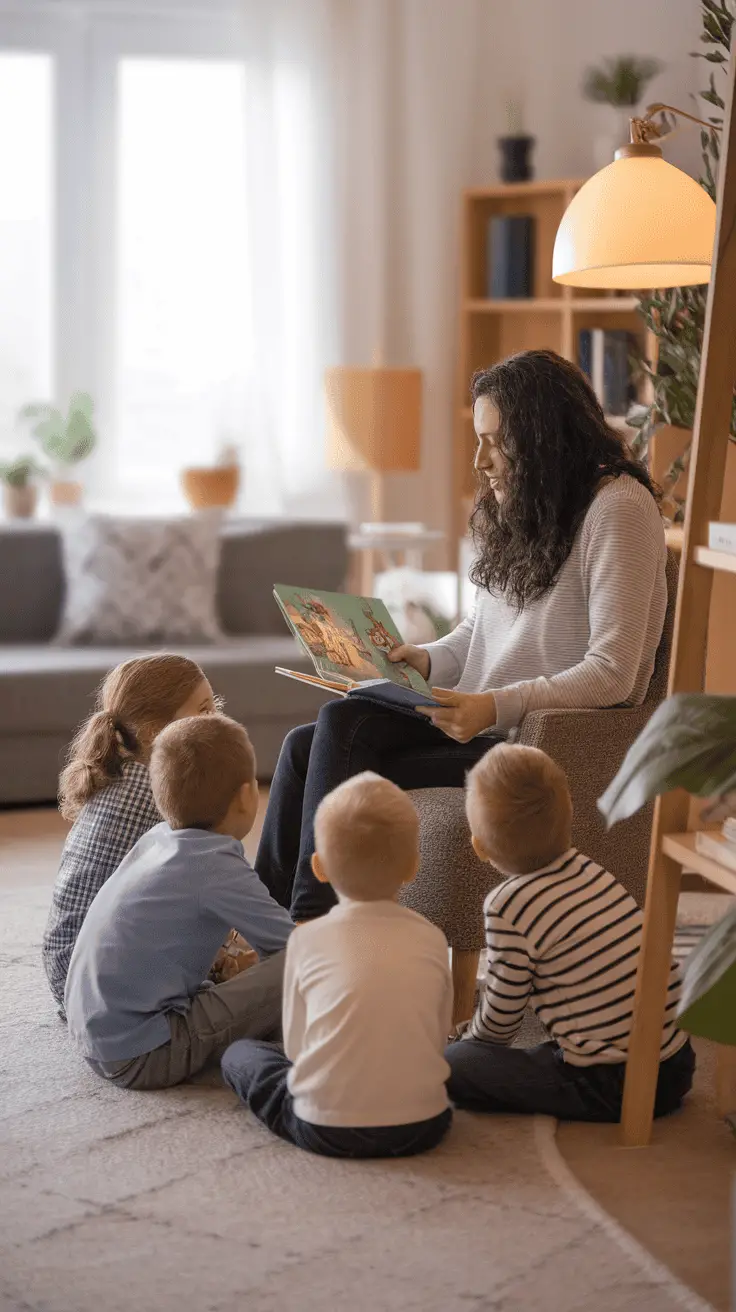
In the image, a cozy setting captures a moment where a caregiver reads to a group of children. They are gathered around, fully engaged in the story. This interactive experience is a wonderful way to support their language development.
Storytelling is a fun and effective method to enhance vocabulary and comprehension. As children listen to stories, they hear new words and phrases. This exposure helps them build a strong foundation for language skills.
In a Montessori environment, storytelling can be paired with hands-on activities. For example, after a story, children can create their own stories using puppets or drawings. These activities encourage creativity and reinforce the language they just learned.
To make the most out of storytelling, consider using books that relate to seasonal themes, like fall. This can tie into fall learning activities for kids, making it easier to connect the stories to their experiences. Encourage discussions about the story to deepen understanding and promote critical thinking.
